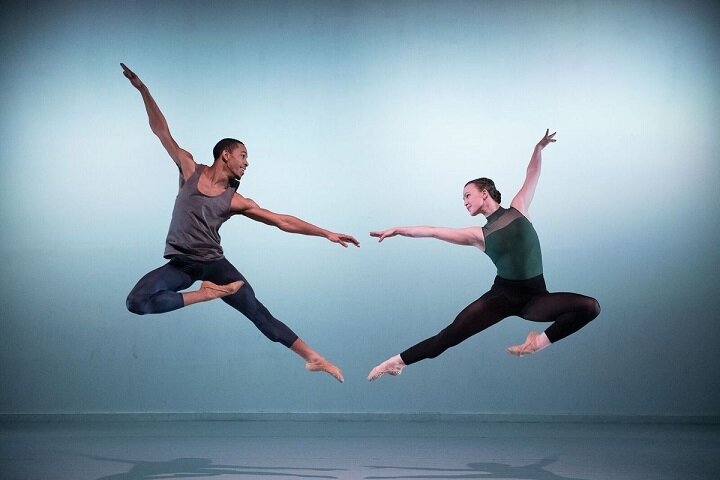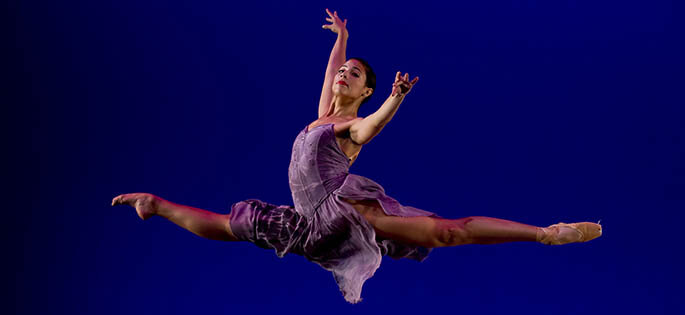The Top 20 BFA Dance Programs for 2020-21
Point Park University
It’s an exciting time to be interested in majoring in dance. Across the country, more colleges are looking to be more creative than ever before with course offerings for prospective students. Even better, we’ve seen a real effort by programs to evolve with their inclusiveness and variety of opportunities.
For this year’s rankings, our search committee looked hard at these programs and rated them on various categories such as scholarship awards, curriculum, performance opportunities, and selectivity. Our committee is made up of dance educators, alums, and parents of prospective students.
So without further ado, in no particular order, here are twenty programs with BFA degrees in Dance that we feel should be looked at above all others.
~~~
Conservatory of Dance, SUNY Purchase College (Purchase, NY)
Why we love it: The program features classical ballet and modern dance techniques and offers a wide variety of contemporary dance styles as well as repertory, pointe, and partnering courses. Exciting electives include Gaga, West African dance, musical theatre, text and movement courses, and Collaborative Video for Choreography. Students are exposed to a full range of somatics courses, including yoga, Pilates, Fluid Form, Alexander Technique, and massage. Their four-year composition and choreography program culminates in senior project performances. The program also features the greatest number of study-abroad programs in any dance BFA program in the United States.
Meadows School of the Arts, Southern Methodist University (Dallas, TX)
Why we love it: Student choreography is a major component of the student experience, guided by expert faculty with considerable professional experience and accolades, and opportunities to learn from visiting masters such as Shen Wei, choreographer of the opening ceremonies of the Beijing Olympics; Adam Hougland, resident choreographer for the Cincinnati and Louisville ballets; and Michael Keegan-Dolan, Fabulous Beast co-founder and 2012-13 Meadows Prize winner. BFA Dance students are also allowed to double major in different areas of study, a rare opportunity.
Belhaven University (Jackson, MS)
Why we love it: Program recently hired excellent new faculty including new Senior Instructor and Resident Choreographer, Robert Wesner. Mr. Wesner formally served as the artistic/executive director and co-founder of Neos Dance Theatre. For seven years, he was a visiting instructor of dance at Oberlin College. He worked at The University of Akron as an adjunct instructor and guest choreographer and was a Knight Arts Challenge recipient.
The Juilliard School (New York, NY)
Photo: Rosalie O’Connor
Why we love it: It’s Juilliard. But more than that, the program offers a robust curriculum. Course offerings include “Alexander Technique”, which has the goal of improving the dancer’s technique from plies and extensions to jumps, leaps, and turns through concentration on movement habits. Emphasizes the efficient use of the neck, head, and torso relationship, thereby providing a stress-reducing process that can be used during class performance and rest.
Jordan College of the Arts, Butler University (Indianapolis, IN)
Why we love it: The department of dance is housed in Lilly Hall, the home of the Jordan College of the Arts. The dance program operates in five fully equipped dance studios featuring Harlequin sprung floors with Cascade coverings, audio/video equipment, pianos, mirrors, ballet Barres and observation windows. Ballet, Modern, Pointe, Men’s Allegro, Pas de Deux, and Character classes are all accompanied by live musicians. Through its relationship with St. Vincent Sports Performance, the Department provides an athletic trainer who consults with students and faculty regarding progressive fitness goals, injury prevention, and rehabilitation should an injury occur. All new dance majors receive a complete movement screening as part of the offerings of St. Vincent Sports Performance.
The Hartt School, University of Hartford (Hartford, CT)
Why we love it: Hartt's Dance Division produces two main-stage concerts every year showcasing students in the works of the most significant choreographers past and present. Concerts are fully produced and often in collaboration with live music from Hartt musicians. In addition, dance students perform in Musical Theatre and Opera productions as well as in an ever-expanding roster of mentored interdisciplinary collaborative events.
University of North Carolina - School of the Arts (Winston-Salem, NC)
Why we love it: During the third year, students participate in the M3 Spree program as part of the Dance Composition and Improvisation course, which includes original choreography performed at the M3 Spree concert. In the fourth year, students participate in the Pluck Project, a school-sponsored group of graduating dancers who choreograph solos and perform original works in New York City for professional choreographers and directors.
Peabody Institute of The Johns Hopkins University (Baltimore, MD)
Why we love it: Embodiment, gender, sexuality, race, class, migration, and globalization are central to the critical study of dance at Peabody. Dance is explored from an interdisciplinary perspective to immerse students in the critical study of movement, bodies, and society that accounts for historical and socio-cultural tensions on and off the stage. Students can take courses in Modern Dance and Ballet technique, somatic approaches to movement and choreography, perform in a pre-professional student dance company, and collaborate with world-renowned guest artists.
Maggie Allesee Department of Theatre and Dance, Wayne State University (Detroit, MI)
Why we love it: There are three performance ensembles: the W.S.U. Dance Company One, Dance Workshop, and To Sangana African Dance Company composed of skilled dance students who must qualify for membership through auditions. They present concerts, lecture/demonstrations, and performances on campus and in the community, choreographed by visiting artists, faculty, and talented students.
Dominican University of California (San Rafael, CA )
Why we love it: The Alonzo King LINES Ballet BFA at Dominican is a rigorous four-year degree program in dance, with an emphasis on training in classical ballet, modern, contemporary, choreography and somatics. Student dancers experience classes at the spacious studios of Alonzo King LINES Ballet. The dance curriculum emphasizes ballet (Western classical dance) as its foundational language, complemented by extensive training in modern and other dance forms.
Towson University (Towson, MD)
Why we love it: The Dance Company's fall and spring performances showcases new works by Towson University faculty and renowned guest artists, such as Mark Taylor, Alonzo King, Larry Keigwin, Troy Powell, David Parsons, Mark Dendy and Gus Solomons. The Towson University Dance Company, founded in 1972, produces quality theatrical dance concerts, educates diverse audiences, and provides professional-level performing experiences to its company members.
Indiana Univesity (Bloomington, IN)
Why we love it: Multiple student organizations such as Movement Exchange, provide an avenue for students to participate in an inclusive international dance exchange that fosters and promotes dance diplomacy/activism, cross-cultural understanding, social justice, youth empowerment, and community-building through the fusion of movement and service. MoveEx regularly travels to Panama and works with youth organizations in Bloomington.
Cornish College of the Arts (Seattle, WA)
Why we love it: Through the Accelerated Degree Program, select students can complete their BFA in Dance in three years with some summer study. They also offer a professional program that awards up to two years of college credit for professional dance experience, enabling professional dancers to complete their BFA in Dance in a shorter time.
Elon University (Elon, NC)
Why we love it: The dance program produces two mainstage dance concerts each year featuring the Elon Dance Company, a student dance company. Dancing in the Black Box is held in the fall semester and features experimental faculty and student choreography. The spring dance concert centers around a specific theme chosen by the director and highlights faculty and guest artist choreography. Additional performance opportunities include Dance in the Landscape, a site-specific dance concert held each September; Tapped Out!, held each January; and the senior dance thesis projects, held each May. Student choreographers have many opportunities to present their work including the Choreography Salon, DanceWorks, Tapped Out, NC Dance Alliance Conference and the American College Dance Festival Conference.
Boyer College of Music & Dance, Temple University (Philadelphia, PA)
Why we love it: The Dance faculty at Boyer are leaders in the field with extensive professional backgrounds. They have performed with Martha Graham Dance Company, Doris Humphrey Repertory Company, Pearl Lang Dance Company, the Metropolitan Opera Ballet, and others. They are writers and editors for leading dance journals and represent the field through international scholarly organizations. They have received National Endowment for the Arts, Pew Foundation, and Guggenheim fellowships; National Dance Education Organization and “Bessie” awards; and numerous Fulbright scholarships.
The Ann Lacy School of American Dance & Entertainment, Oklahoma City University (Oklahoma City, OK)
Why we love it: The American dance teacher degree with an emphasis on Dance Studio Management is focused on developing employable dancers and teachers for the entertainment industry. The American dance teacher program has three core focuses: dance technique training, choreography & pedagogy instruction, and arts management & business administration. The dance training core focuses on tap, jazz, theatre dance, and ballet as used in musical theatre.
Mason Gross School of the Arts, Rutgers University (New Brunswick, NJ)
Why we love it: Coursework includes, Laban Movement Analysis, which explores a systematic study of Laban's theoretical model describing concepts and principles of human movement. It includes an overview of Bartenieff Fundamentals (BF), an integrative tool for reeducating the body.
Point Park University (Pittsburgh, PA)
Why we love it: Outstanding faculty include Garfield Lemonius, whose career adventures include performing in film, with contemporary companies, and in solo guest works across the United States, Canada and Europe. He was a principal dancer with the Dallas Black Dance Theatre, where he performed works by noted American choreographers, and toured throughout the U.S. and Europe. He has worked with acclaimed choreographers including Robert Battle, Colin Connor, David Parsons, Bruce Wood, Charles "Chuck" Davis, Alonzo King, Donald McKayle, Troy Powell, and Kevin Wynn, and has performed solo masterworks by renowned dance masters including Talley Beatty, Asadata Dafora, Jose Limon and Martha Graham.
The Ailey School/Fordham University (New York, NY)
Why we love it: An innovative partnership between The Ailey School and Fordham University, the Ailey/Fordham Bachelor of Fine Arts (BFA) degree combines the finest in dance and liberal arts education in a 4-year program. Students complete a diverse curriculum while attending both institutions full time. Throughout their four years, BFA students have many opportunities to learn from and perform varied repertory with renowned faculty and guest artists from The Ailey School. They perform at The Ailey Citigroup Theater, Fordham University’s Pope Auditorium, and, in their senior year, other venues in the greater New York City area. At the completion of the bachelor’s degree program, The Ailey School and Fordham University present their students in a fully produced performance.
Tisch School of the Arts, New York University (New York, NY)
Why we love it: Intensive coursework includes “Ballet is for everyBODY”. The three week course’s physical practices and research are geared to allow the students for greater freedom in their approach to ballet technique by promoting confidence and a more positive sense of self. Special emphasis is placed on the distinction between movement that is imitated versus movement generated from a deliberate and deeply personal practice; the dancer’s body is recognized as an instrument carrying all their experiences and directly feeding into their unique understanding of ballet technique and artistry.





